Characteristics of Early Marriages
Family Profile No. 23, 2017
Author: Kasey J. Eickmeyer & Paul Hemez
The age at first marriage has risen steadily since the 1950s (FP-16-07). In 2015, about half of all women married by age 28, and half of men did so by 30 (FP-16-07). In this profile, we compare the characteristics of men and women in early marriages (marriages in which both members were younger than twenty-five) to those in later marriages (marriages in which at least one partner was twenty-five or older). Using the 2015 American Community Survey (ACS) and the 2011-2015 National Survey of Family Growth (NSFG), we focus on the educational attainment, race and ethnicity, premarital cohabitation, and fertility behaviors of recently married individuals in different-sex marriages. The ACS represents marriages in the last year, and the NSFG data represents marriages since 2010.
Among marriages formed in the past year (as measured in 2015), for the first time (i.e., neither was previously married), early marriages constituted about 17% of recent marriages.
Among marriages in which both the bride and groom were married 11% were early marriages (Figure 1) a slight decline from 14% in 2008 (not shown).

11% of recent marriages were early marriages

Figure 1. Percentage of Early and Later Marriages Among Those Who Married in the Past 12 Months
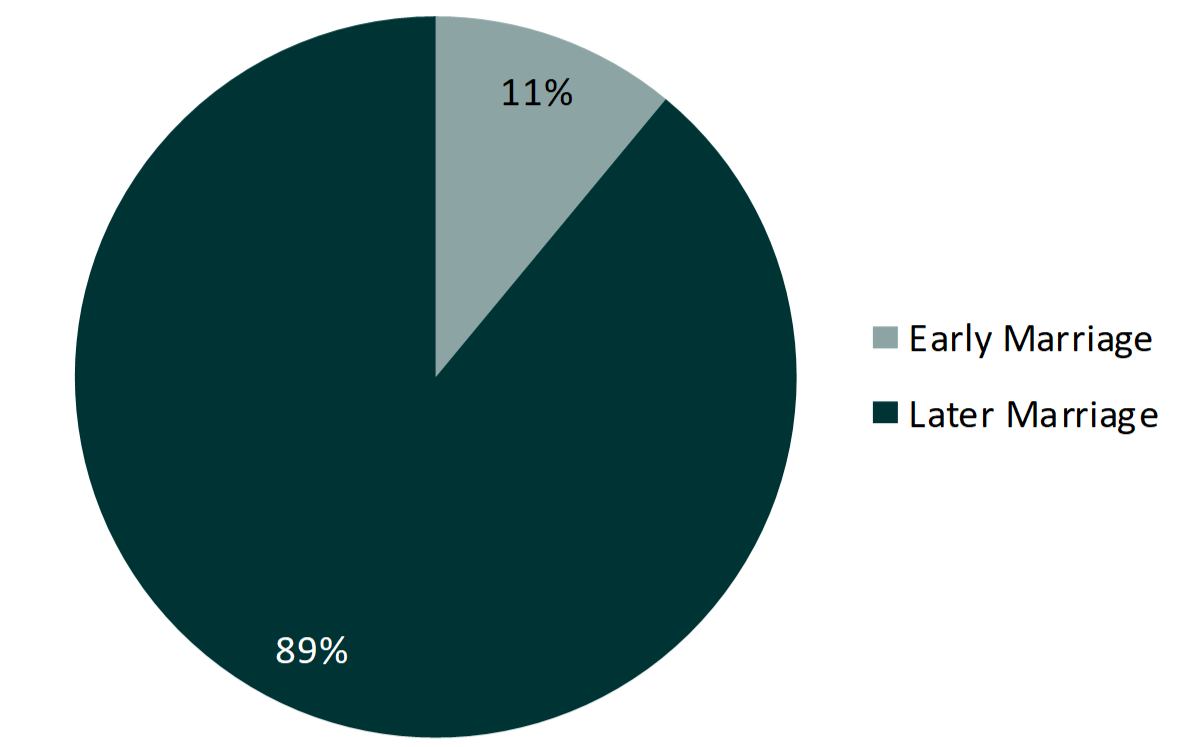
Educational Attainment
- Nearly 1 out of 5 marriages among those with less than a high school degree was an early marriage, whereas only 7% of marriages occurring among individuals with a bachelor's degree or more were early marriages.
- The share of early marriages among those with less than a high school degree was over twice as large as those with a bachelor’s degree or more.
Figure 2. Percentage of Early Marriages Among Those Who Married in the Past 12 Months by Educational Attainment, 2015
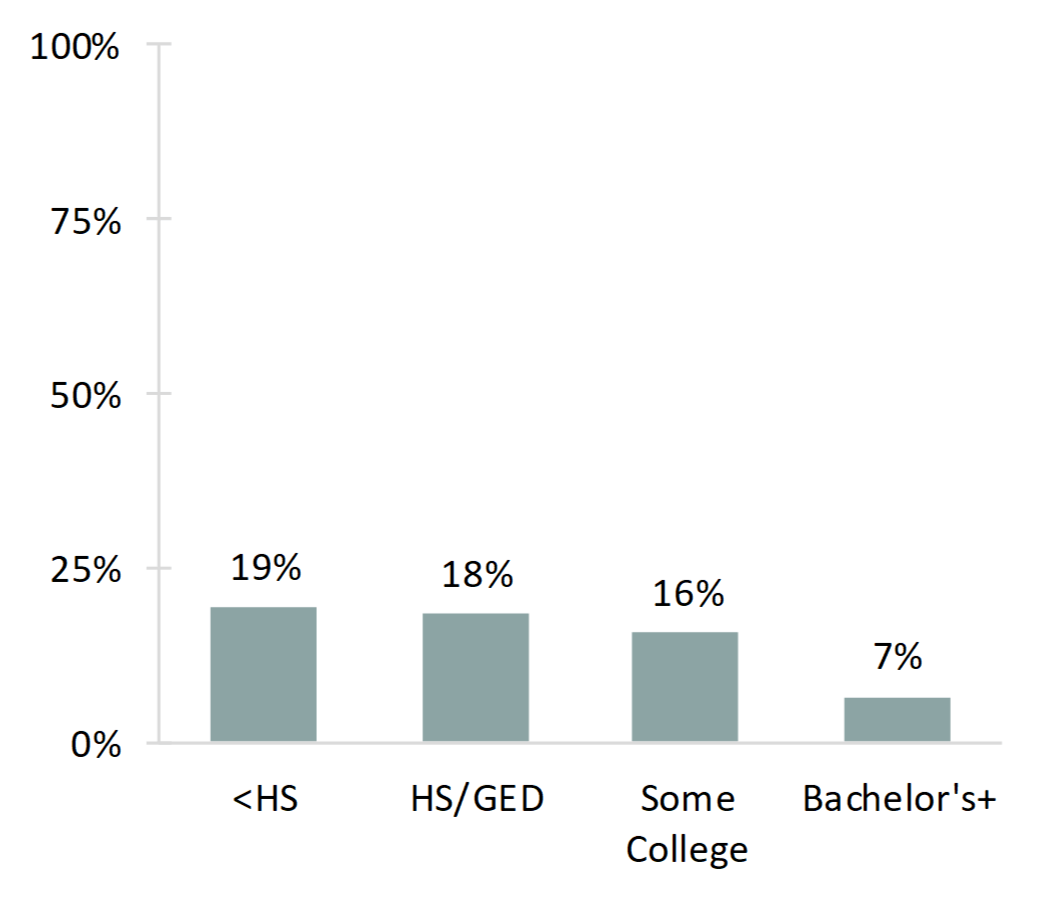
Race and Ethnicity
- Hispanics had the largest share (14%) marrying early, followed by 12% of Whites.
- Asians had the smallest share in an early marriage— only 1 in 25 newlywed Asians were young adults under age twenty-five.
Figure 3. Percentage of Early Marriages Among Those Who Married in the Past 12 Months by Race/Ethnicity, 2015
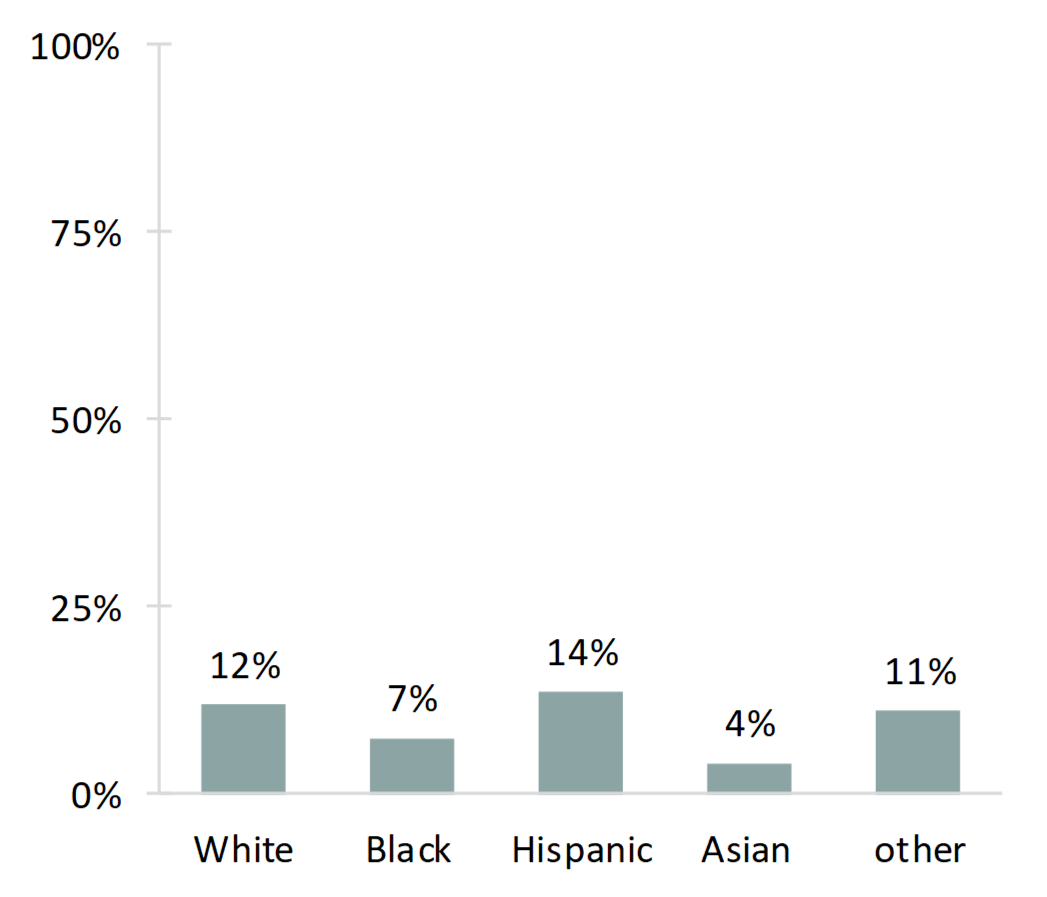
Premarital Cohabitation
- Among men and women who recently married, a majority had cohabited prior to marriage. However, a greater share of those in later marriages had cohabited (73%) compared to those in early marriages (53%).
Figure 4. Premarital Cohabitation Among Those Who Recently Married by Early vs. Later Marriages
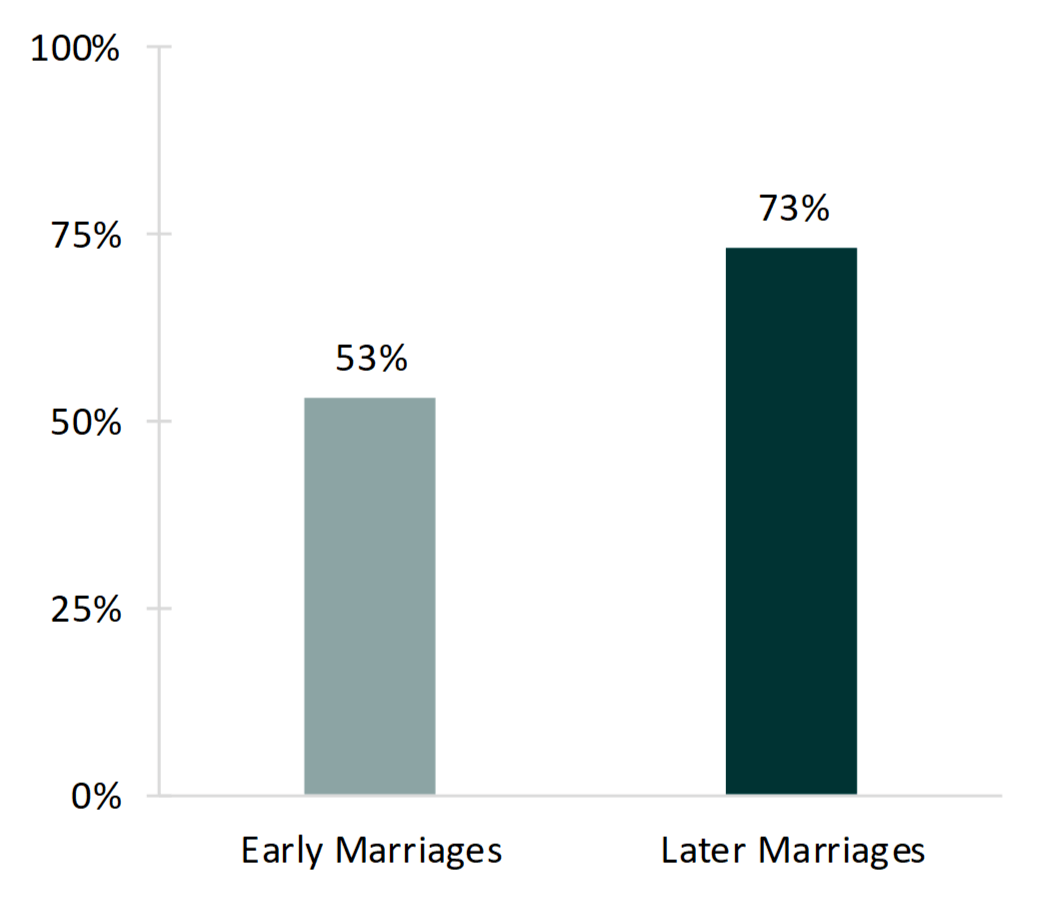
Fertility Behaviors
- The share of newlywed women aged 15-44 in 2015 who had given birth within the past 12 months was nearly twice as large for those in early marriages (21 %) than later marriages (11 %) (ACS data not shown).
- A majority of women who recently married intended to have children. More women in early marriages (79%) had intentions to have children than did women in later marriages (53%).
Figure 5. Respondent "Intends to have (more) children" Among Those Who Recently Married by Early vs. Later Marriages
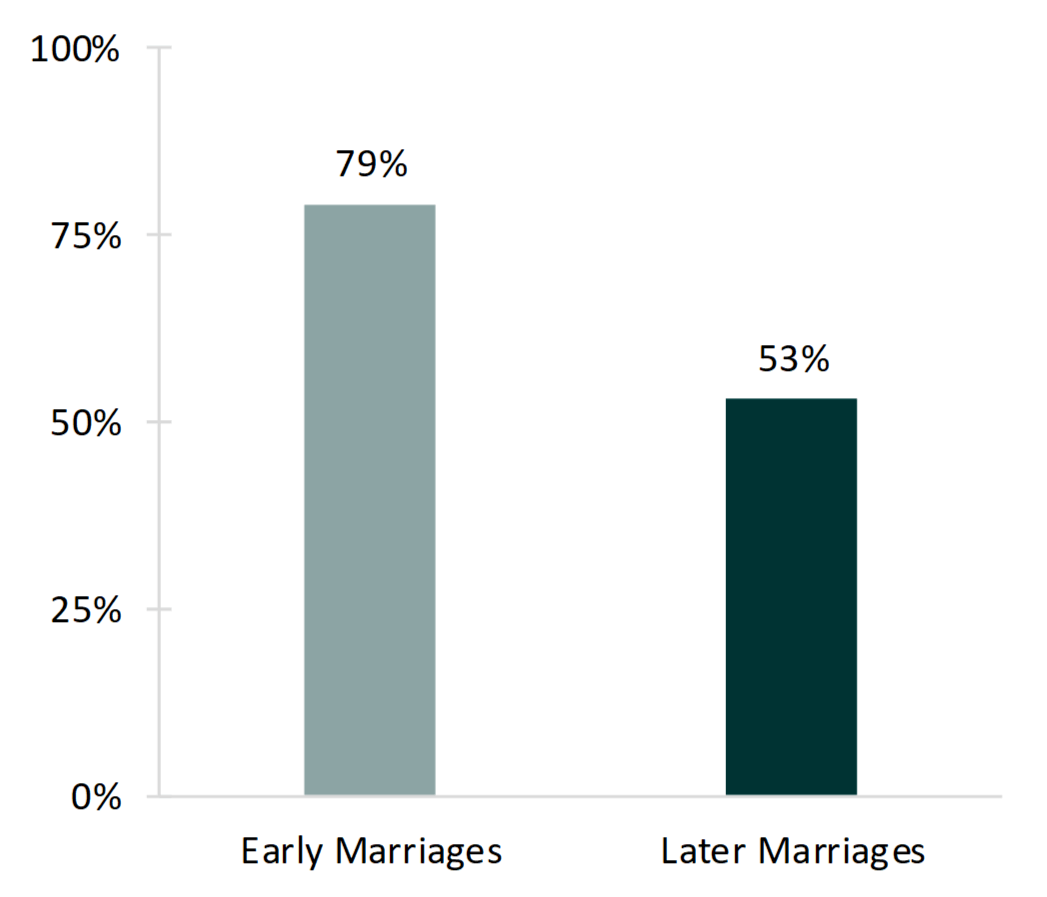
Data Sources
- Ruggles, S., Genadek, K., Goeken, R., Grover, J., and Sobek, M. (2017). Integrated Public Use Microdata Series: Version 7.0 [dataset]. Minneapolis, MN: University of Minnesota, 2015. https://doi.org/10.18128ID010.V7.0
- National Center for Health Statistics (NCHS). (2016). 2011-2015 National Survey of Family Growth Public Use Data and Documentation. Hyattsville, MD: CDC National Center for Health Statistics. Retrieved from http://www.cdc.gov/nchslnsfg/index.htm
References
- Anderson, L. & Payne, K. K. (2016). Median age at first marriage, 2014. Family Profiles, FP-16-07. Bowling Green, OH: National Center for Family & Marriage Research. https://www.bgsu.ed u/ncfmr/resources/data/family-profiles/anderson-payne-median-age-first-ma rriage-fp- 16-07.htmI
Suggested Citation
- Eickmeyer, K. J., & Hemez, P. (2017). Characteristics of early marriages. Family Profiles, FP-17-23. Bowling Green, OH: National Center for Family & Marriage Research. https://doi.org/10.25035/ncfmr/fp-17-23

This project is supported with assistance from Bowling Green State University. From 2007 to 2013, support was also provided by the U.S. Department of Health and Human Services, Office of the Assistant Secretary for Planning and Evaluation. The opinions and conclusions expressed herein are solely those of the author(s) and should not be construed as representing the opinions or policy of any agency of the state or federal government.
Updated: 04/06/2021 02:09PM

